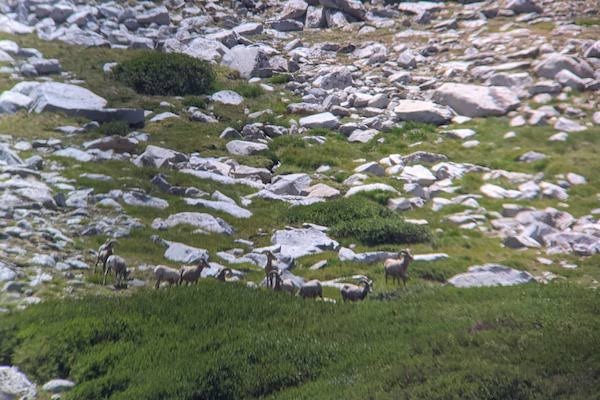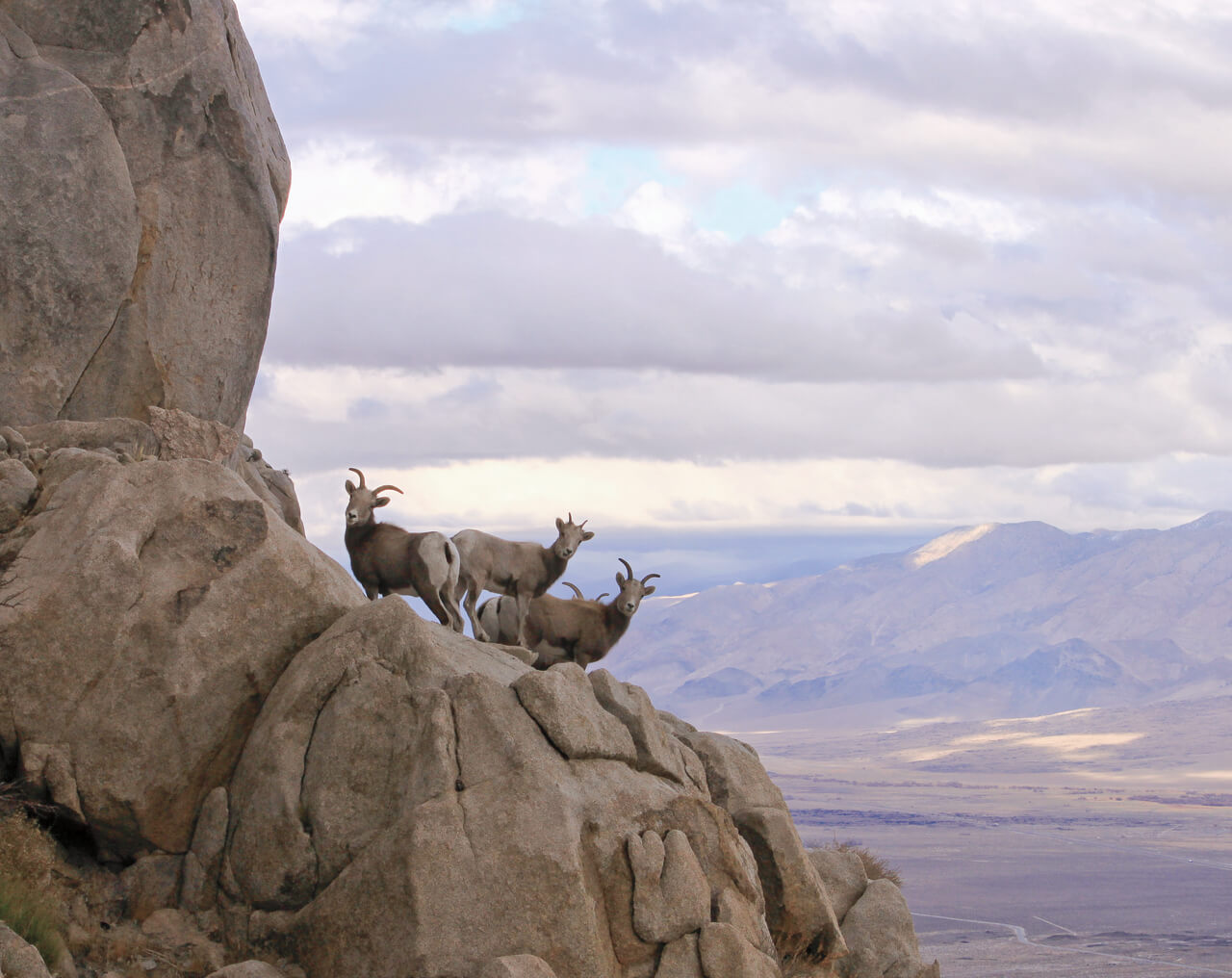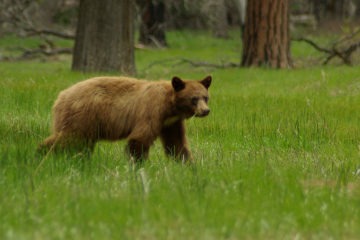Sierra Nevada bighorn sheep roam the rocky crest of the mountain range they are named for. These high-altitude herds graze green patches of vegetation in steep, secluded environments where many of us will never tread. The return of this wilderness icon to Yosemite National Park has been made possible through decades of collaboration.
“The biggest lessons from the bighorn sheep project is that endangered species projects take time, and growing a small population requires taking risks,” says Yosemite wildlife biologist Sarah Stock, who will lead a Bighorn Sheep Backpack with Yosemite Conservancy’s Outdoor Adventures in August. “For more than 30 years, Yosemite Conservancy donors have played a significant role in restoring Sierra Nevada bighorn sheep to the park.”
Sierra Nevada bighorn sheep are a distinct subspecies of bighorns, who have lived in the Sierra Nevada for approximately 600,000 years. In the second half of the 19th century, the introduction of domestic sheep spread pneumonia. Herds of bighorns disappeared from Yosemite and much of the Sierra by the 1880s, with only three surviving in the 1970s — almost a century later — when recovery efforts being to bring them back.

A herd of bighorn sheep graze on alpine grass.
In the 1980s, plans came together for these iconic animals to return to the northern reaches of their historic range. Thanks to donor support, The Yosemite Fund purchased a domestic sheep allotment — land designated and managed for livestock grazing. This enabled the reintroduction of 27 bighorns to Lee Vining Canyon in 1986. The Fund also financed biologists Les Chow and Peggy Moore to monitor the bighorn sheep. The 27 split into what are now referred to as the Mt. Warren and Mt. Gibbs herds, which have become established along the eastern crest.
“Sierra Nevada bighorn sheep are tough animals, but they are vulnerable to malnutrition, disease, avalanche accidents, predation, and genetic inbreeding,” Stock says. “A large population can ride out these threats, but a small population needs careful tracking of survivorship and reproduction, and the willingness to intervene by augmenting with individuals from source herds.”
The translocations of sheep over the years were made possible through collaborations among Yosemite National Park, California Department of Fish and Wildlife, Sierra Nevada Bighorn Sheep Foundation, U.S. Forest Service, U.S. Fish and Wildlife Service, and Yosemite Conservancy.
In 1999, Sierra Nevada bighorn sheep were listed as endangered under the federal Endangered Species Act. The National Park Service and its partners have closely monitored and augmented bighorn sheep populations in Yosemite, as needed, in accordance with the Recovery Plan. The plan outlines goals based on population and distribution over four recovery units, with herds in Yosemite as part of the northern unit.
In 2015, 13 bighorn sheep were released into the Cathedral Range, forming a new herd in Yosemite’s Wilderness. Balancing years where there are abundant lambs and population rebounds are years with high losses from mountain lion predation or large snowfalls that result in population declines.
“When I wrote that petition for federal endangered status, we had barely over 100 sheep left in the Sierra,” notes John Wehausen, founder of the Sierra Nevada Bighorn Sheep Foundation. “Now, under our worst conditions, the total population is about 500. Compared to where we’ve been, it’s glorious.”

“For more than 30 years, Yosemite Conservancy donors have played a significant role in restoring Sierra Nevada bighorn sheep to the park.” Sarah Stock, Yosemite Wildlife Biologist
Wehausen, an integral part of the recovery efforts, has spent nearly 50 years researching bighorns and mapping everything from their population distribution to genome. Even after all this time, he still relishes every opportunity to spot another sheep.
“I’ve looked at thousands of them over the years,” he says. “It’s always a delight to find them and see them. Just viewing bighorn sheep is a really special thing.”
Yosemite Conservancy donors have provided nearly $1 million to Sierra Nevada bighorn research and recovery efforts. This funding enabled important actions to be taken and research to be accomplished. While the overall population has stabilized, larger herds are found in the central and southern recovery units. With the record-breaking snow of the 2022–2023 winter season, Yosemite’s herds may be set back once again.
“Sierra Nevada bighorn sheep are lucky, because they have caring and hardworking people who are willing to intervene on their behalf and who will never give up,” Stock says.

